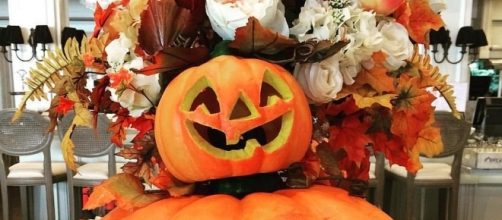Have you heard that Burger King in New York celebrated Halloween by dressing up as a McDonald’s, their fast food competitor? For this year's prank, the restaurant covered itself with a white sheet and painted "McDonald's“on it. The sign out front said, “BOOOOO! Just kidding, we still flame grill our burgers. Happy Halloween!” To use Halloween as a commercial trick isn't something unknown to us but this one is really great, that we can admit.
The Ancient Origins of the Holiday
Evolving from the ancient Celtic holiday of Samhain, modern Halloween has become less about literal ghosts and witches and more about costumes and candy.
One of the world's oldest holidays is still celebrated in many countries, including Mexico, Canada, United States, and the land of its origin, Ireland. Today, Americans spend an estimated 6 billion dollars on Halloween, making it the country’s second largest commercial holiday.
Halloween in America
Most Americans go crazy for Halloween by buying candy, costumes and decorations, not even noticing that they are spending more money that they need. Many people say that Mars, Snickers and clothing stores all around America have the greatest benefits from Halloween. Traditions include costume parties, trick-or-treating, pranks and games.
In America, young people, especially girls, cherish one particular tradition, and that's BOBBING FOR APPLES.
If you haven't heard what bobbing for apples is, here is the answer. It's like a romantic fortune telling game that predicts whom you will marry some day. Some people would write specific names on the apples to determine who would be their match, others raced to see who could emerge with an apple first, predicting who was next to get married.
Either way, biting an apple meant living happily ever after. Just like fairy tales and Valentines' right?
Halloween in Mexico
In Mexico, Día de los Muertos or the Day of the Dead is connected to the religious rituals, honouring the dead ones. They believe that souls come back to earth and they even construct them an altar. After the altar is finished, they decorate it with candy, flowers, and photographs, samples of the deceased’s favourite foods and drinks, and fresh water.
Candles and incense are burned to help the deceased find the way home. The grave is then decorated with flowers, and relatives usually make a picnic there. Some gatherings are like real parties, they even include tequila and a mariachi band.
So, is it true that Halloween is just a mass producing holidays that has no true value or significance? Is it just about money making and popularising brands? When we read about the traditions and realise how much people spend on Halloween, we can’t conclude anything other than that is a great commercial trick. Some people ask questions such as why should we bother to preserve this holiday.
Is there a Special Value
On the other hand, some people still believe that Halloween has a special message to teach us.
Some believe that this holiday helps us to preserve our sense of fellowship and community with our neighbours. Richard Seltzer, an American author who specialised in human rights, wrote an article in which he describes how he taught his children about the value of Halloween. He said that many of the people they visited were elderly folks who they only see at Halloween even though they live just a few doors away. He says that „the true value and importance of Halloween comes not from parading in costumes in front of close friends and family, but from the interchange with strangers, exorcising our fears of strangers, reaffirming our social bond with the people of the neighbourhood who we rarely, if ever, see the rest of the year.“
Love it or hate it, we all know what's Halloween.
And it's been commercial since the early 20th century. Because of this commercial purpose, many people struggle whether to celebrate it or not. Whether you want to spend great amounts of money, or teach your kids a lesson, at the end, it's all on you.

